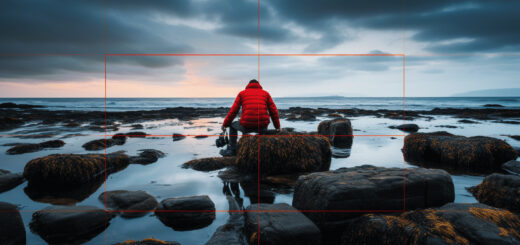Mastering Portrait Photography: Tips and Techniques for Stunning Portraits
Welcome to the world of portrait photography! Whether you’re an aspiring photographer or someone who simply loves taking pictures, mastering the art of capturing stunning portraits is a skill that will greatly enhance your photography skills.
Portrait photography allows you to create beautiful and compelling images that capture the essence of a person, their emotions, and their unique personality. It’s more than just taking a picture; it’s about telling a story and creating a connection between the subject and the viewer.
In this article, we will explore the world of portrait photography and provide you with tips, techniques, and practical advice to help you take your portrait photography to the next level. We will delve into the technical aspects, discuss common mistakes to avoid, and discover ways to stay inspired in this exciting and creative field.
So, whether you’re capturing portraits of your friends and family, or you aspire to become a professional portrait photographer, get ready to embark on a journey of creativity, emotion, and stunning imagery. Let’s dive in!
Understanding Portrait Photography
When it comes to capturing stunning portraits, understanding the essence of portrait photography is essential. It is not just about pointing your camera at someone and clicking a button; it is about portraying the subject’s personality, emotions, and unique qualities. In this section, we will dive into what portrait photography is all about.
What is Portrait Photography?
Portrait photography is a genre of photography that focuses on capturing the likeness, personality, and mood of a person or a group of people. It is about creating a visual representation that tells a story and evokes emotions. A well-executed portrait can reveal the subject’s character, show their relationships, and freeze a moment in time.
Portrait photographers use various techniques to bring out the best in their subjects. They play with lighting, composition, and posing to create visually compelling images. Whether it’s a professional portrait session, a candid shot, or a self-portrait, the goal is to capture the subject’s essence and make a connection with the viewer.
Technical Aspects of Portrait Photography
When it comes to portrait photography, there are several technical aspects that you need to consider in order to capture stunning portraits. From camera settings to lighting and composition, each element plays a crucial role in creating a visually appealing image. In this section, we will explore these technical aspects in detail.
Camera Settings
The camera settings you choose can greatly impact the outcome of your portrait photography. Here are some important settings to consider:
- Aperture: The aperture determines the depth of field in your image and controls how much of the background is in focus. A wide aperture (small f-number) like f/2.8 or f/1.8 creates a shallow depth of field and helps to isolate the subject from the background, resulting in a beautiful bokeh effect.
- Shutter Speed: The shutter speed determines how long the camera’s sensor is exposed to light. It affects the overall brightness of the image as well as the ability to freeze or blur motion. For most portraits, a shutter speed of around 1/125th of a second is a good starting point to avoid camera shake and ensure sharp images.
- ISO: The ISO setting determines the camera’s sensitivity to light. A higher ISO (e.g., 800 or above) is useful in low-light situations but can introduce noise in the image. Try to keep the ISO as low as possible while maintaining a well-exposed photo.
Lighting
Lighting is one of the most important aspects of portrait photography. It can make or break an image, so it’s essential to understand how to use it effectively. Here are a few lighting techniques to consider:
- Natural Light: Utilizing natural light can create soft, flattering portraits. The golden hour, which occurs during sunrise or sunset, provides a warm, diffused light that adds a beautiful glow to your subjects. Avoid shooting in harsh midday sunlight, as it can create harsh shadows and unflattering highlights.
- Artificial Lighting: If natural light is not available or not sufficient, artificial lighting can be used to create stunning portraits. Studio strobes or continuous lights offer full control over the direction and intensity of light. Experiment with different lighting setups, such as Rembrandt lighting or butterfly lighting, to achieve the desired mood and effect.
Composition
Composition refers to how the elements within your frame are arranged. A well-composed portrait can captivate viewers and convey a strong visual message. Consider the following composition techniques:
- Rule of Thirds: Divide your frame into a 3×3 grid and place your subject along the gridlines or at the intersection points. This creates a more visually pleasing and balanced composition.
- Leading Lines: Utilize leading lines to draw the viewer’s attention towards the subject. These lines can be natural elements like roads or fences or created using architectural elements.
- Background: Pay attention to the background of your portrait. A cluttered or distracting background can take away from the main subject. Look for simple and clean backgrounds that complement the subject or consider using a shallow depth of field to blur the background.
Remember, these technical aspects are just guidelines, and experimentation is key to finding your own unique style in portrait photography. With practice, you will become more familiar with your camera settings, lighting techniques, and composition, allowing you to capture stunning and impactful portraits. So, grab your camera, start exploring these technical aspects, and watch your portrait photography skills soar!
Practical Tips for Stunning Portraits
Whether you are a professional photographer or just a hobbyist, capturing stunning portraits is always a rewarding experience. With the right techniques and some practice, you can turn your portraits into timeless works of art. Here are some practical tips that will help you master the art of portrait photography:
Directing the Subject
One of the most important aspects of portrait photography is directing your subject. Creating a comfortable and relaxed environment for your subject is crucial to capturing authentic and natural expressions. Here are a few tips to help you direct your subject effectively:
- Establish rapport: Take the time to connect with your subject before the shoot. Get to know them, have a friendly conversation, and make them feel at ease in front of the camera.
- Give clear instructions: Communicate your ideas and vision to your subject. Provide clear instructions on how you want them to pose, where to look, and how to position their body. Be patient and guide them throughout the process.
- Encourage natural expressions: Encourage your subject to relax and be themselves. Capturing candid moments and natural expressions can result in some of the most captivating portraits.
Choosing the Right Equipment
The equipment you use can greatly impact the outcome of your portraits. While it’s true that a skilled photographer can capture stunning portraits with any camera, investing in quality equipment can enhance your results. Here are a few considerations when choosing your gear for portrait photography:
- Camera: Use a camera with a high-resolution sensor and good low-light performance. This will allow you to capture sharp and detailed portraits, even in challenging lighting conditions.
- Lenses: Invest in a good portrait lens, such as a prime lens with a wide aperture (e.g., 50mm f/1.8). These lenses offer excellent bokeh (background blur) and allow you to create a shallow depth of field, which can make your subject stand out.
- Lighting equipment: Experiment with different lighting setups to create the desired mood and effect in your portraits. Consider using natural light, reflectors, or even artificial lighting such as studio strobes or continuous lights.
Improving Post Processing
Post processing is an essential part of portrait photography. With the right editing techniques, you can enhance your portraits and bring out the best in your subjects. Here are a few tips to improve your post processing skills:
- Use editing software: Adobe Lightroom and Adobe Photoshop are popular choices for editing portraits. Familiarize yourself with these tools and learn how to make basic adjustments like exposure, contrast, and color corrections.
- Retouching: Take time to retouch your portraits, but be careful not to overdo it. Focus on subtle enhancements like removing blemishes, reducing skin redness, and smoothing out wrinkles.
- Experiment with styles: Develop your signature editing style by experimenting with different presets and filters. Creating a consistent look across your portfolio can help establish your unique brand as a portrait photographer.
By applying these practical tips, you can take your portrait photography to the next level. Remember, practice and experimentation are key to mastering this art form. Keep honing your skills, stay inspired, and enjoy the process of capturing stunning and memorable portraits. Happy shooting!
Common Mistakes in Portrait Photography
Portrait photography can be a beautiful and rewarding art form, but it’s not without its challenges. Even experienced photographers can make mistakes that can negatively impact their portraits. To help you avoid these pitfalls and capture stunning portraits, here are some common mistakes to watch out for:
- Poor Lighting: Lighting plays a crucial role in portrait photography. One of the most common mistakes is using harsh or unflattering lighting. This can result in harsh shadows, blown-out highlights, or uneven lighting on the subject’s face. To avoid this, consider using natural light or diffused light sources like softboxes or umbrellas to create a soft and flattering light on your subject’s face.
- Incorrect Focus: Focusing is another critical aspect of portrait photography. One mistake photographers often make is focusing on the wrong part of the subject, such as the background instead of the subject’s eyes. To ensure sharp and crisp portraits, focus on the subject’s eyes and use a wide aperture to create a pleasing depth of field.
- Neglecting Composition: Composition plays a vital role in creating visually appealing portraits. However, one common mistake is neglecting composition and simply placing the subject in the center of the frame. To add interest to your portraits, try using the rule of thirds, leading lines, and symmetry to create a balanced and visually engaging composition.
- Lack of Connection: A great portrait captures not only the subject’s physical appearance but also their personality and emotions. One common mistake is not establishing a connection with the subject. Take the time to communicate with your subject, make them feel comfortable, and build a rapport. This will help bring out their true personality and create more compelling portraits.
- Over-Editing: While post-processing can enhance your portraits, one common mistake is over-editing them. Heavy-handed editing techniques like excessive retouching, oversaturating colors, or over-sharpening can result in unnatural-looking portraits. Remember that less is often more when it comes to editing, and strive for a natural and timeless look.
- Ignoring the Background: The background can make or break a portrait. One common mistake is not paying enough attention to the background and ending up with distracting elements or cluttered backgrounds that take away from the subject. Before taking the shot, take a moment to survey the background and make adjustments if needed, such as changing your angle or using a wider aperture to blur the background.
Remember, even the most experienced photographers make mistakes. The key is to learn from them and continuously improve your skills. By avoiding these common mistakes, you can elevate your portrait photography and capture stunning and captivating portraits that truly stand out.
How to Stay Inspired in Portrait Photography
Portrait photography is a beautiful and creative art form that allows you to capture the essence and soul of your subject. As a photographer, it’s important to stay inspired and motivated to create stunning portraits. Here are some tips to help you stay inspired in portrait photography:
1. Experiment with Different Styles and Techniques
Don’t be afraid to step out of your comfort zone and try new things. Experiment with different styles of portrait photography, such as candid, environmental, or conceptual. Learn about different lighting techniques and experiment with natural light, studio lighting, or off-camera flash. By trying new styles and techniques, you’ll keep your creativity flowing and discover new ways to capture stunning portraits.
2. Explore Different Locations
Sometimes, a change of scenery can do wonders for your inspiration. Get out of the studio and explore different locations for your portrait shoots. Whether it’s a picturesque park, an urban street, or a stunning natural landscape, the environment can add depth and interest to your portraits. Take advantage of the variety of backdrops available to you and let the location inspire your creativity.
3. Study the Work of Other Photographers
One of the best ways to stay inspired is by studying the work of other photographers. Look for renowned portrait photographers whose work resonates with you and study their techniques, compositions, and use of lighting. Attend photography exhibitions, browse through photography books, or follow photographers on social media platforms to gather inspiration from their work. Seeing the creativity and talent of others can spark new ideas and help you push your own boundaries.
4. Join Photography Communities and Workshops
Engaging with fellow photographers can be highly motivating and inspiring. Join photography communities, whether in person or online, to connect with like-minded individuals who share your passion for portrait photography. Participate in workshops, photo walks, or photography challenges to learn from others and exchange ideas. The support and encouragement of a community can fuel your inspiration and help you grow as a photographer.
5. Take Personal Projects
Engaging in personal projects is a great way to stay inspired and push your creative boundaries. Choose a theme or concept that interests you and plan a series of portrait photographs around it. This could be a project exploring different emotions, a series on a specific cultural tradition, or portraits of people from different walks of life. Personal projects allow you to express your unique vision and tell meaningful stories through your portraits.
6. Step Back and Take a Break
Sometimes, the best way to reignite your inspiration is by taking a step back and giving yourself a break. Allow yourself time to rest and recharge. Take time away from photography to pursue other interests or indulge in activities that bring you joy. Use this time to reflect on your work, set new goals, and come back with a fresh perspective. Taking breaks can prevent burnout and help you approach your portrait photography with renewed passion.
Remember, inspiration can come from anywhere – a movie, a piece of music, a conversation, or even a simple moment of observation. Keep your eyes and mind open, and let the world around you fuel your creativity. Stay curious and always be willing to learn and grow as a portrait photographer. With these tips, you’ll find yourself consistently inspired and capturing stunning portraits that truly reflect your unique vision and style.
Now let’s go out there and create some magic with your camera!
Conclusion
In conclusion, mastering portrait photography requires a combination of technical knowledge, practical skills, and creative inspiration. By understanding the fundamentals of portrait photography and implementing the right techniques, you can capture stunning portraits that truly reflect the personality and essence of your subjects.
Remember to pay attention to the technical aspects of portrait photography, such as camera settings, lighting, and composition. Experiment with different angles, perspectives, and lighting setups to create unique and captivating portraits.
Additionally, don’t be afraid to direct your subjects and guide them during the photoshoot. By providing clear instructions and establishing a comfortable environment, you can help your subjects feel at ease and capture natural, authentic expressions.
Choosing the right equipment, including the camera and lenses, is also vital for achieving high-quality portrait photographs. Consider investing in a camera that suits your needs and preferences, such as the Sony mirrorless cameras featured on Wimarys.com.
Finally, don’t underestimate the power of post-processing. With the right editing techniques, you can enhance your portraits, adjust colors, and create a cohesive look. Experiment with different editing styles and find your unique editing aesthetic.
To continue your journey in portrait photography and explore more tips, tutorials, reviews, and inspiration, be sure to visit Wimarys.com. With Wim Arys’ expertise and passion for photography, you’ll find a wealth of resources to help you improve your skills and create stunning portraits.
Remember, practice makes perfect, so grab your camera and start capturing those beautiful moments!
Frequently Asked Questions
- What are the essential tips for mastering portrait photography?
Some essential tips for mastering portrait photography include: 1. Understanding composition and framing, 2. Utilizing proper lighting techniques, 3. Establishing a connection with your subject, 4. Choosing the right location and background, and 5. Paying attention to details like posing and expression.
- What camera gear is recommended for portrait photography?
For portrait photography, it is recommended to have a DSLR or mirrorless camera with a good quality lens such as a prime or portrait lens. Additionally, using an external flash or reflector can be beneficial for controlling lighting.
- How can I capture natural and candid expressions in portrait photography?
To capture natural and candid expressions in portrait photography, it’s important to make your subject feel comfortable and relaxed. Engage in conversation, use prompts or games, and capture moments in-between poses to capture genuine expressions.
- Are there any specific techniques for posing in portrait photography?
Yes, there are various posing techniques you can use in portrait photography. Some common techniques include: 1. Guiding your subject’s body and face angles, 2. Utilizing hands and arms to create dynamic poses, 3. Incorporating leading lines and symmetry, and 4. Experimenting with different poses to find what works best for your subject.
- How can I achieve a blurry background in portrait photography?
To achieve a blurry background, also known as bokeh, in portrait photography, you can use a wide aperture (low f-number) on your camera lens. This will create a shallow depth of field, focusing on the subject and blurring the background.



